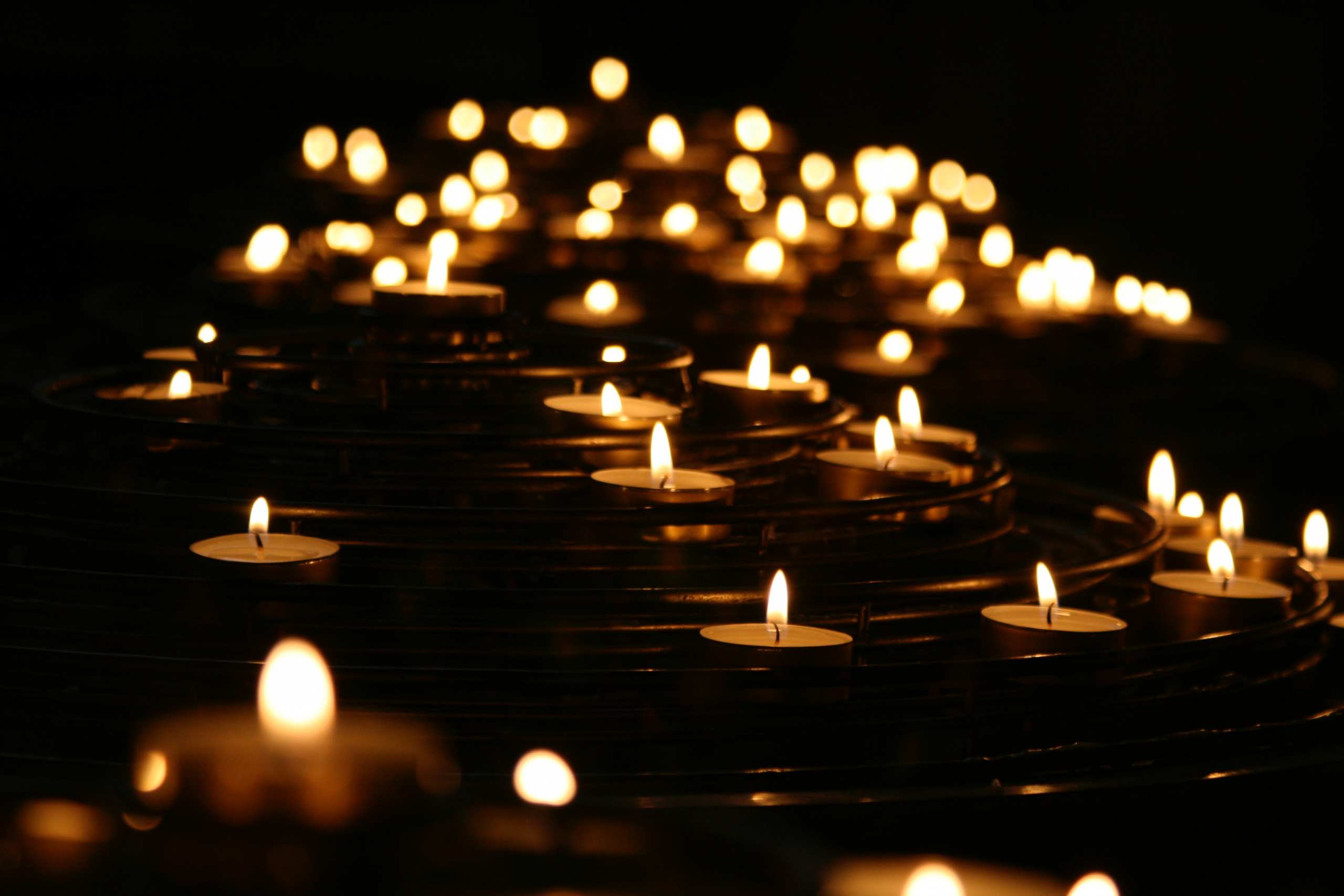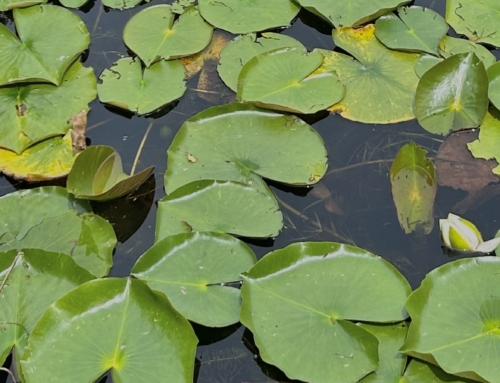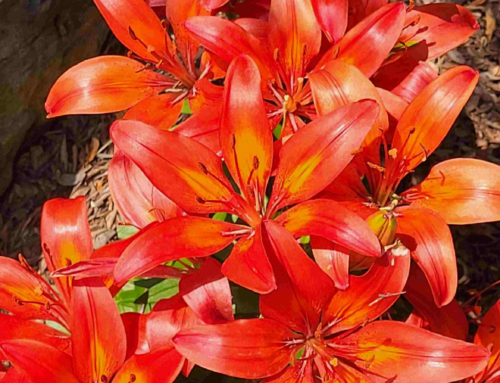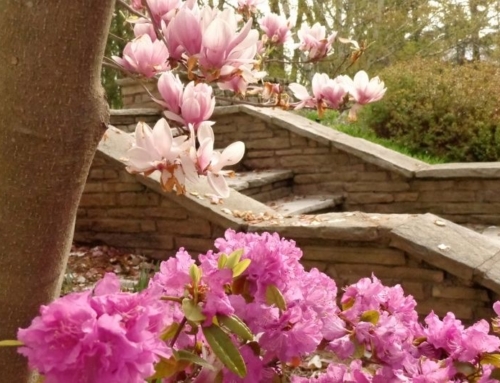Written by: Loretta Jaunzarins, Pastor of Grace Lutheran Church, Hamilton and Life-Cycle Celebrant
I have had a relationship with rituals and rites of passage throughout my life. As a child, my parents said a prayer before we ate our meals and when I got to be about five or six, it was my turn to recite the blessing. Being a religious family, my mother sent us out the door to school with a blessing that God would watch over us and help us to be kind that day. At night, my siblings and I said our prayers before bed. Although I left my parents’ Protestant denomination by the time I was in my early twenties, these religious rituals helped me connect with something greater than myself. Since I was a child I have been on a journey of connecting with this greater power and acknowledge my parent’s guidance for starting me on that journey. As I grew, I rejected my parents’ understanding of God, but I didn’t reject the higher power and the journey. (I later learned that rejection was quite normal.)
As a family, we went to religious services weekly. I especially connected to the Christian ritual of communion or Eucharist. What can more be more intriguing for a child, in an otherwise seemingly very long service, than plates of cubed bread and small cups of grape juice being passed around? Christmas and Easter services linger in my mind. I can still hear the music, see the bright red of the Poinsettias and smell the Easter lilies. Aren’t our brains fascinating!
My parents came to Canada from war-torn Europe and gardening and the outdoors were important to them. Every spring we went to a garden centre after my father got home from work. It was a yearly family ritual that I loved. My mother’s favourite flower, among the dozens she purchased, were snapdragons. My father chose the tomato and other vegetable plants. As soon as we arrived home the planting ritual began. It was the one night of the year when my mother lingered outside in her garden until it really got dark and late. It was one night that my father got us into bed.
We had other rituals throughout the year. Each family member’s birthday was celebrated with a special dinner and a cake plus a small party with friends and relatives. My mother baked and cooked traditional Latvian food at Easter and Christmas. We celebrated being Canadian with Thanksgiving turkey and the backyard BBQ which became all the rage in the 1950s. We went to the beach in the summer and on one-day fishing trips. To really give us the outdoor experience we camped and cottaged at Temagami and Wellington.
Then, as I grew, I heard that people died and tried to figure out what that meant. I didn’t understand death, but I knew that my mother would lovingly bake bread or a casserole and we would take it to a neighbour. My parents would go to funerals while a neighbour watched us. I remember weddings in our family and the church community. It was an exciting time compared to funerals. I learned that both were important. And when babies were born there was also a great celebration. In looking back, I can see that each year was full of traditional ritual practices in my family and then occasions that maybe weren’t expected but needed to be marked and honoured.
The rituals my family practiced gave me a sense of belonging and a connection to my past. My paternal grandparents got caught behind the Iron Curtain, but traditional Latvian food at Easter and Christmas connected us with them at the moment. Celebrating family birthdays made me feel welcomed and an important member of the family. Rituals around birth, marriage and death helped me make sense of change and to expect the unexpected. Sacred places weren’t just church spaces, but anywhere I wanted them to be whether my mother’s garden, making a sandcastle on a beach or hiking trails in northern Ontario.
Joseph Campbell would probably say that I had pretty good exposure to ritual and myth in my formative years. My parents probably didn’t think about what they were doing at this level, but they innately sensed that ritual and spirituality were just as important as education and nourishment.
Ethnographer and Folklorist Arnold van Gennep, wrote about rites of passage and the critical importance of transitioning through life’s stages and how rites of passage and ritual are essential for healthy transitions and well-being.
Many of us no longer seek the rituals of organized religion or have deep cultural or ethnic roots. Yet, we still feel a need for marking transitions and making spiritual connections. Deep down we know the importance of meals with family and friends, having a purpose, meaningful work, forgiveness, learning new things, connecting with others and meditation and prayer. All of these contribute to our well-being and connectedness.
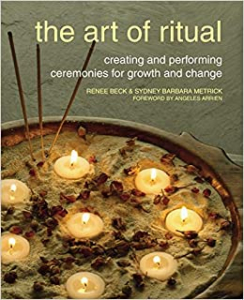
The five-part webinar series on Rituals and Rites of Passage that I held recently, looked at the importance of marking transitions in our lives with ritual and rites of passage. I chose to use the book The Art of Ritual by Renee Beck and Sydney Barbara Metrick because it’s written for people who want to mark transitions and make meaningful rituals to do so. Beck and Metrick acknowledge that religious rituals are still important for many, but even more people are seeking meaning and ritual outside of traditional religious institutions. Over the five weeks we learned what rituals and rites of passage are, the function of symbols in our lives and in ritual, the categories of rituals (beginnings, mergings, cycles, endings, healings), the five elements (earth, fire, wind, water and essence), and finally, we experienced a ritual that I created to welcome spring and new growth in our lives.
The current pandemic challenges the traditional rituals that we would be engaged in such as weddings, funerals, birthday and anniversary celebrations, the arrival of a baby, and work transitions, to name but a few. Still, this challenge has given us the opportunity to be creative in how we address transitions in our lives and the importance of relationships and community. As with any transition, even pre-pandemic, it never comes without challenges. Life is always bitter-sweet.
If you are seeking ways to mark and honour the transitions in your life you might want to consider purchasing The Art of Ritual. It is a wealth of information and includes exercises to reflect on the chapter but also put what the reader has learned into practice. It’s a learning-contemplation-action kind of book. Spring is a great opportunity for a ritual to mark the changing season but also to mark personal transitions. It’s an opportunity for shedding the old and watching the new grow up through the cold, dark soil of our soul’s experience and be assured that day follows night. Each morning gives us a new day and a new way of being in the world. A simple morning ritual is to acknowledge this with a few minutes of quiet as you wake, perhaps the lighting of a candle to symbolize the light coming into your life and a moment of gratitude for all that we have – past, present and future.


